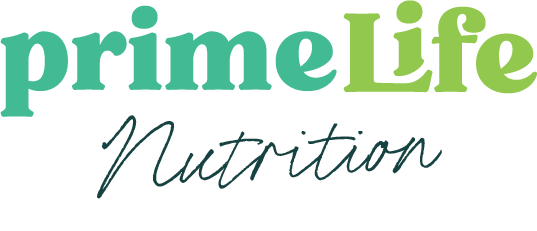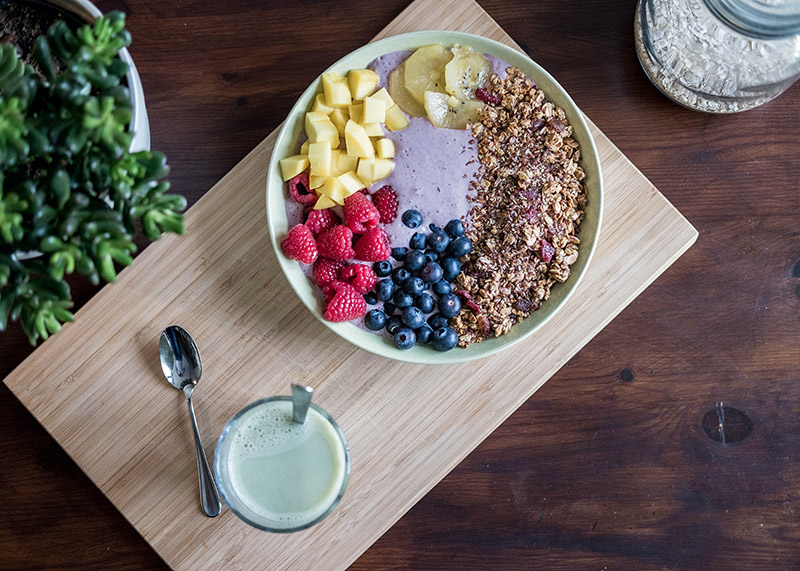
by Primelife Admin | Jan 18, 2021 | Featured, Food Science, News
Superfoods; the buzz word that makes some foods seem like a magic little pill of wonder. But what about these foods make them super? Why some foods and not others? What’s the criteria a food has to have to be a superfood?
Let’s first look at the definition of a superfood: “a nutrient-rich food considered to be especially beneficial for health and well-being”. Is this not the most vague definition? Almost any food can be considered beneficial for health and well-being. There are no requirements or specifications to consider a food super. That being said, the buzzword can be applied to pretty much anything. Check out the most common foods labeled as superfoods:
- Dark leafy greens
- Spinach, kale, collard greens, broccolini
- Seeds
- Flax, chia, hemp, sesame, poppy
- Fruits
- Berries, apples, pomegranates, pineapple, oranges, goji berries
- Vegetables
- Celery, tomatoes, peppers, eggplant, squash, broccoli, sweet potatoes
- Beans/legumes
- Chickpeas, black beans, navy beans, kidney beans, lentils
- Grains
- Sprouted, popcorn, quinoa, barley, oats
- Healthy fats
- Tuna, salmon, avocado, olives, nuts
- Oils
- Avocado, sesame, grapeseed, olive
- Powders
- Spirulina, acai, seaweed, pea protein, nutritional yeast, collagen
- Sweets
- Dark chocolate, honey, cocoa powder
So why are some foods labeled as superfoods and some not? The answer to that is simple: marketing. When you look at this list of foods, it’s pretty much every food you’d consider to be healthy. This list could go on and on and on. You could even consider a beef burger a superfood since it has benefits to our health (high iron and protein). What marketing companies are betting on is that you go for the package that’s labeled as a superfood and also $1-2 more than the competitors.
The moral of the story here is all foods can be considered super. There is not some magic component in them that makes them better than any other food. Yes, you want more of them on a daily basis and they have wonderful health benefits, but they will not magically make you healthy when you eat them. So next time you grab those apples or kale because they are considered a superfood, make sure you’re buying it for the right reasons. Always eat a variety of foods to ensure you’re getting all the vitamins and minerals our bodies require. The more the merrier!

by Primelife Admin | Dec 21, 2020 | Featured, Food Science, News
When you head to the grocery store, do you go with a plan, a list, or an agenda? This can help keep you on track, but most grocery stores are counting on you browsing and buying more than you need. They have many methods in place that persuade you to add extra items to your cart that you didn’t plan on buying. Before you know it, a trip that should’ve cost about $130 ends up costing closer to $250-300! Sounds like Target trips, am I right? Check out the top ten tricks the grocery store puts in place to get you to buy more than you need.
- The Atmosphere
Grocery stores want you to walk into a bright and inviting store. This is why the produce is front and center when you enter. It’s colorful, bright, and boosts your mood. You’ll often see the floral department or bouquets of flowers in the front entrance as well. How do flowers not brighten your mood? Another quick trick is one you hear and not visualize. The music they play in the store is made to be upbeat and make you feel good. If we know anything, we know that when we’re in a good mood, we’ll end up buying more.
- Layout of the store
Ever heard the advice to stick to the perimeter of the store for healthy foods? Well, this is also where the higher ticket items are. Fresh produce, meats, fresh dairy, and seafood are all on the perimeter of the store and ironically the more expensive items as well. They also strategically have the bathrooms and staple foods items like bread, milk and eggs in the back of the store so you’ll walk through the whole store to get to them. They’re counting on you adding more items to your cart while walking to the back of the store.
- Reducing the price by a penny
If you look at something that’s $4.00 versus something that’s $3.99, you perceive the $3.99 item to be cheaper. It’s been researched many times that lowering the price by just a penny persuades customers to buy it. Although we know that it’s a $4 item, we’re more likely to buy it seeing the 3 in front of it rather than the 4.
- Giving percentages off rather than dollars
Using percentages off makes an item seem like more of a deal rather than giving a certain dollar amount off. If a steak is $20, most stores will advertise that it’s 20% off rather than giving $5 off. Twenty percent off is only $4 off the purchase price, even though the number of the discount is higher. So although it seems like a better deal, it may not be as great as you think!
- Buzzwords
They work everytime! Putting certain words on packages automatically makes us perceive it as healthy. Seeing “gluten free”, “all natural”, “high protein”, “keto”, “paleo”, “low fat” are just a few of the buzzwords that we see on foods. These don’t necessarily make foods a healthy option, but what they will do is increase the price. You’ll end up spending more on something that you may not have needed, but because it looks healthier, you just have to try it!
- Bo-Go Items
Buy-one-get one free always seems like such a great deal. However, that food or drink is overpriced and then listed as “bo-go” to get you to buy two rather than one. Companies set the price to cover the 50% off and also make a profit. So next time you see this deal, think about whether or not you really need two and if it’s actually a good deal.
- Increasing Demand
Creating a false sense of urgency is a great way to create demand. When you see “limited time”, “limited release”, “new flavor”, “while supplies last” and “single-batch” you’re most likely to grab it because it’s new and something that may not be there the next time you come back. The stores are counting on you wanting to try the newest item or flavor so you grab it while you can.
- Product Placement
Every item that’s placed on the shelves is placed with intention. Ever notice that the store-brand items are often on the bottom, name brand is in the middle of the shelves and the highest priced items are towards the top? Consumers are more likely to grab the foods at eye level or higher, so the cost of the foods you buy are just a little bit higher than store-brand.
- Check-out line grabs
The check-out line always has candy, gum, and snacks at the ready so you can grab a pack of gum or that sweet treat you’ve been craving. These items are purposely put at arms-reach of kids in the cart so they can grab it as well. Just another way to increase your spending amount, even by a candy bar.
- Paying virtually
Credit cards and apple pay have made it SO much easier to swipe or scan and everything is paid for. This ease of payment makes the cost of the bill seem unimportant and something we don’t even think about. If you were to pay in cash and have to count it out, it makes it feel much more real. The easier it is to pay, the less we’re likely to pay attention to how much we’re spending.
Next time you hit the grocery store, make sure to have a list of items, stick to the list and try not to be persuaded by buzzwords. Of course there’s always that one thing you want to try or that grabs your attention, but now you can be more aware of some of the tactics stores are using. Moral of the story here is grab the foods that interest you, but if you’re trying to stick to a budget, beware of these strategies!
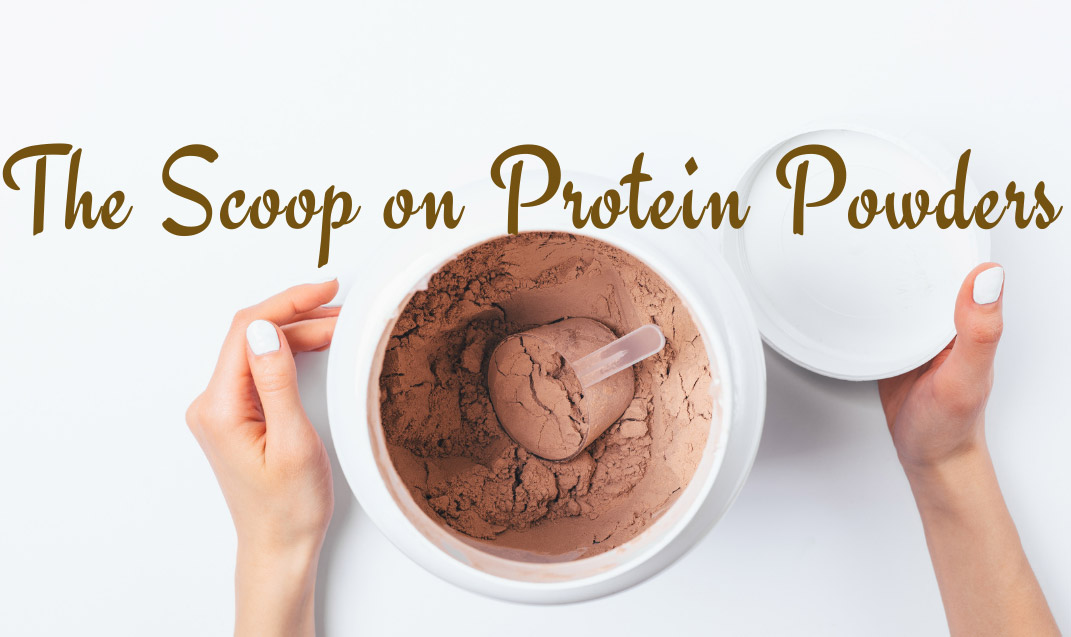
by Primelife Admin | Oct 15, 2020 | Featured, Fitness, Food Science
Protein powders are always a topic of conversation and this blog is going to help break down what they are, what types may be more beneficial for you, and if you should even be taking one. Let’s first talk about what types of protein powders are out there and why they’re different.
- Whey – One of the most common protein powders out there, and one of the first powders produced for mass consumption. It’s a complete protein (contains all essential amino acids) and helps with muscle repair and rebuilding post-workout. Whey comes from cow’s milk. It’s the whey that is skimmed off of milk when they make it into a cheese. It’s literally the whey in “curds and whey”. For this reason, some people’s digestive systems don’t take too kindly to it. If you don’t tolerate milk-based products well, this is probably not the powder for you. Whey protein isolate has the highest protein concentration and little fat content which make it desirable for muscle building without fat gain.
- Casein – This is another milk-based protein powder but is absorbed much slower and longer than whey protein. This is a great protein powder to have before bed since it will supply the body with protein overnight when you’re sleeping but your body is still recovering. Make sure to look for calcium caseinate to ensure you’re getting the purest and most absorbable form of it.
- Soy – Soy based powders are plant-based and are also a complete protein, meaning they provide all the essential amino acids your muscles need. This is a great alternative for those following a vegan/vegetarian diet or who are lactose intolerant. It is more tolerated in the gut, but those who can’t tolerate soy would want to look at alternatives.
- Brown Rice – Another plant-based protein option, but it is not considered complete. You want to make sure you pair it with other plant based protein so you do meet the essential amino acid profile your body requires. Some other protein you could pair it with include hemp or pea powder. Brown rice is also hypoallergenic and very easily digestible.
- Pea – A great protein powder that is plant-based and should be paired with other plant proteins like hemp or brown rice. It is also highly digestible and would blend well in smoothies.
- Hemp – A high-fiber plant-based protein powder that also offers up healthy fats as well. This is a great choice for a vegan or vegetarian diet, but again should be paired with one or two other plant-based proteins so you get the best protein absorption.
Dairy-based proteins like whey and casein are great choices for their muscle building benefits as well as availability of zinc and iron if you’re not vegan or suffer from allergies. However, there is a strong case for integrating plant based proteins into your diet as they are easily digestible and have been proven to fight inflammation and reduce muscle soreness more effectively than dairy proteins.
Since one plant based protein powder alone won’t offer a complete protein, look for a product that combines several to create a full amino acid profile. Some brands that offer this include Orgain, Plant Fusion or Vega One. They provide complete proteins, omega-3s, probiotics, greens, and antioxidants all in one serving.
Protein powders can be easy, affordable, and clean; you just need to know how to pick them. Start with figuring out what protein powder would be the best for YOUR body. One powder that works for someone else won’t necessarily work for you as well. Then figure out where it fits in your schedule. It could be easier to throw it in your morning smoothie, having it with milk or water right after a workout, or right before bed if you’re taking casein. It isn’t always about paying the highest price for a powder, it’s more about what your body likes most, and keeping the ingredients clean. Watch out for ingredients like corn syrup solids, brown rice syrup, hydrogenated oils, or hidden sugars like dextrose, glucose, or palm sugar. You still want to be able to recognize and understand what the ingredients are regardless of how much protein and fiber is in a supplement.
If you’re ever unsure about what protein powder works for you, you should always talk to a professional about it. The best way to figure out which one works best for you is to try it. Head to a local supplement store and try to get samples of products before you invest and buy one. If you’re going to spend the money, you want to make sure it’s the right product for you. As always, if you have any questions, feel free to reach out to us!
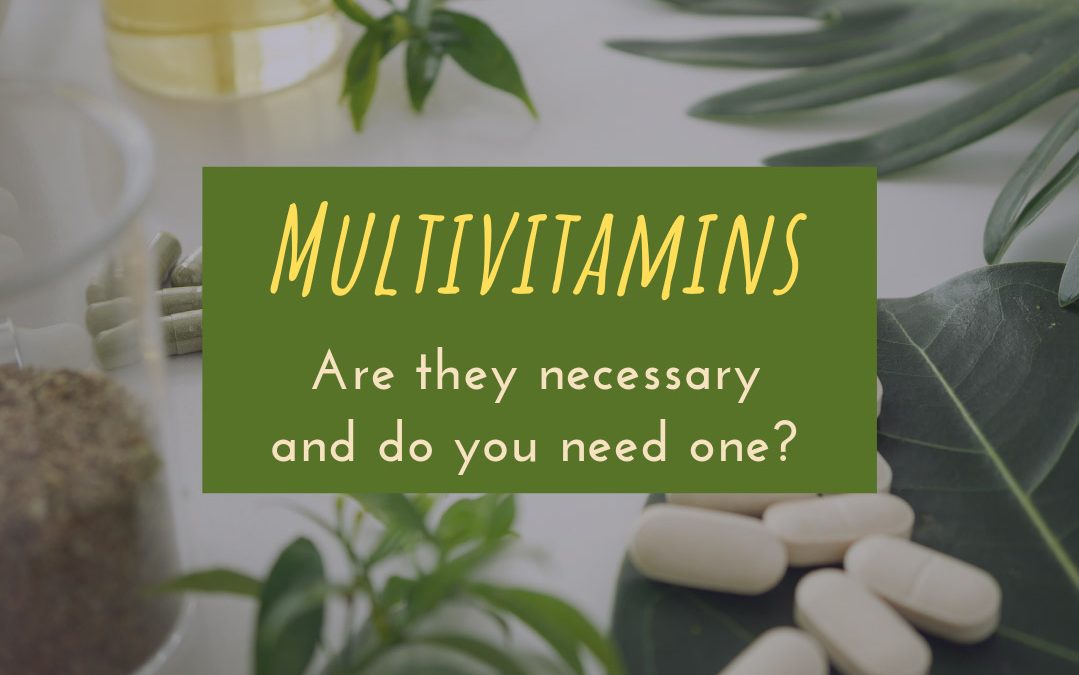
by Primelife Admin | Oct 15, 2020 | Featured, Food Science, Meal Prep
Should you be taking a multivitamin?
Before you can answer this question, you need to first take a look at your diet and any health conditions you are currently experiencing.
- Are you eating a well-rounded diet? Have you cut out any food groups?
It is important to first get your vitamins and minerals from the foods you eat. You will get more nutrition from the diversity of the foods and more fiber, phytochemicals, and antioxidants that you cannot get from supplementation. These elements of whole foods prevent diseases and improve bowel movements. However, no one person’s diet is perfect. Many people cut out certain food groups, such as dairy, for health reasons. If this is true for you, a multivitamin may be beneficial to fill in the gaps.
- Do you have a health condition that may cause you to not be able to absorb certain nutrients, or cause you to need more of a certain nutrient?
Many digestive complications such as Crohn’s disease and Inflammatory Bowel Disease can lead to malabsorption of certain nutrients. Over a period of time, nutrient deficiencies can develop and cause various symptoms. Talking to a dietitian and your doctor about your disease and possible nutrient deficiencies that may result can help you decide which vitamins you should be focusing on. Getting your vitamin and mineral levels checked can reveal if you need more than what a multivitamin can offer. If this is the case, you may be recommended to take individual supplements that have higher doses for what you need. In some situations, like being pregnant, you may need more of certain nutrients such as folic acid and iron. Pregnant women should take a prenatal vitamin.
You can never go wrong with talking to your dietitian and doctor about taking a multivitamin or a specific vitamin/mineral supplement. Explain your current diet and any health conditions you are experiencing. Above all, focusing on eating more foods in their whole and natural forms will always benefit you. You cannot overdose on nutrients when eating a balanced diet of fruits, vegetables, protein, dairy, and grains. However, you can reach a toxicity level from popping a higher dose of vitamins/minerals than you need.
Above all, if you are eating a balanced diet and are not experiencing any health conditions that require you to need more of certain nutrients, you may be better off saving your money and continuing to focus on your diet!
–Tara Greenwood Penn State University Dietetics Student
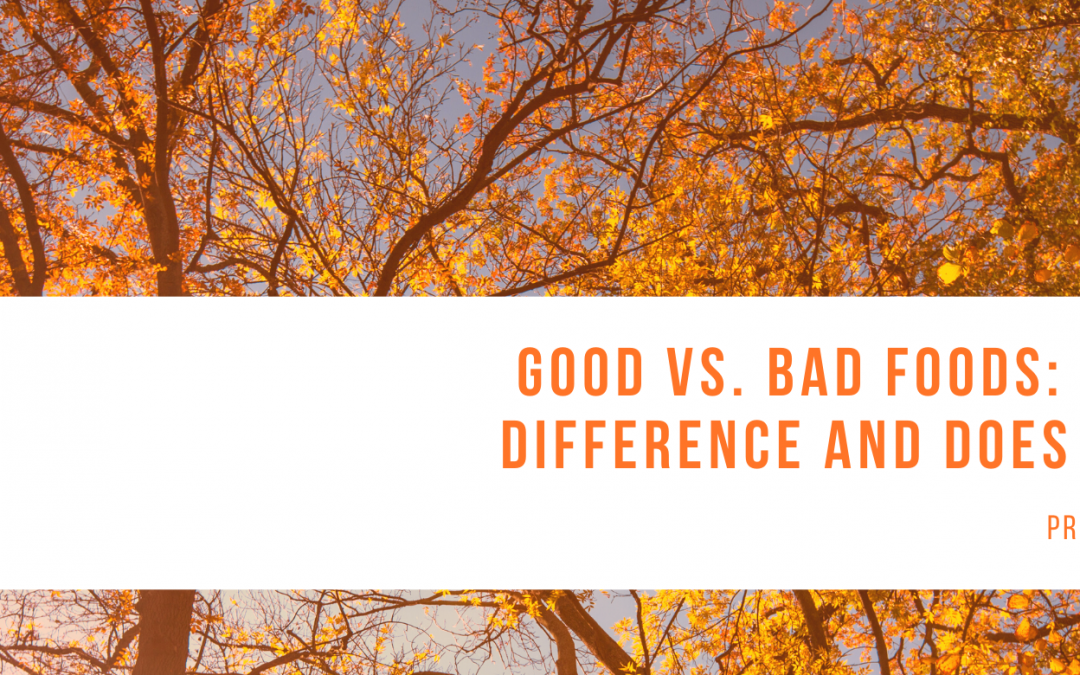
by Primelife Admin | Sep 24, 2020 | Featured, Meal Prep
I hear it ALL the time, “this food’s good for you” or “this food is bad for you”. But where do these definitions come from and why do we feel the need to place them in categories to make us feel a certain way about eating them? Defining a food as good or bad only puts the notion of how you’re going to feel after you eat a certain food. Are you going to feel good after eating a bagel and cream cheese if you consider it bad? Well, of course not if you’re defining these foods as bad. It’s time to throw away the idea that foods can be categorized as one thing or the other. It’s not about food being good or bad, it’s about what your body needs and wants and listening to it!
So let’s explore what we consider “good” and “bad”. After a fun little Facebook poll, I was able to see what you think makes a food good and bad.
Here are some answers for “good” foods:
- A food in its natural state
- Makes you feel good and does good things for you
- Grown from the Earth naturally
- Minimally processed
- You know where it’s coming from (ie; produce stand or butcher)
And here are the answers for “bad” foods:
- Makes you feel bad after you eat it
- Processed or injected with preservatives or dyes
- Fried or really heavy meals
- Foods high in sodium or fat
- Foods with a lot of ingredients or really shelf-stable
Now that we’ve identified the good and the bad, let’s throw this whole idea out and start thinking about foods differently. We need to stop villainizing foods and making ourselves feel guilty over eating certain foods. This pulls us away from listening to our bodies and eating intuitively, and closer to eating what we think we should eat rather than what we want to eat.
In order to allow ourselves to stop categorizing foods, you need to start thinking about the foods you genuinely enjoy and how to incorporate them into your day to day. If you love mac and cheese (like me), it shouldn’t be something that you’re afraid to eat or only eat on special occasions. It should be a food that you have when you want it, and get satisfaction from. Allowing yourself to enjoy the foods you love can help limit the feeling of needing to over eat that food. The more you restrict, the more you want it; so why deprive yourself? Every fad diet out there will give you a list of “no” foods and a list of “yes” foods. All this does is reinforce the categorizing of good and bad foods.
We give food way too much power than it deserves. We allow it to adjust our social life, make us feel restricted, and sometimes even affect the relationships we have with others. If you want to stop feeling so powerless towards dieting, you have to take the power for yourself. Stop being afraid of foods and start loving foods. Be comfortable, happy and confident with the choices you make. The more intuition you put into eating, the more empowered you feel and the more you’ll want to eat foods that make you feel better as a whole.
Eating intuitively takes time, patience, and lots of rewiring our brains. Working with a Registered Dietitian can help you plan, strategize, and ensure you’re not overwhelmed with changing the way you see foods. Just remember that no one food is going to sabotage your hard work and the less stress you put on yourself, the easier the transition will be.
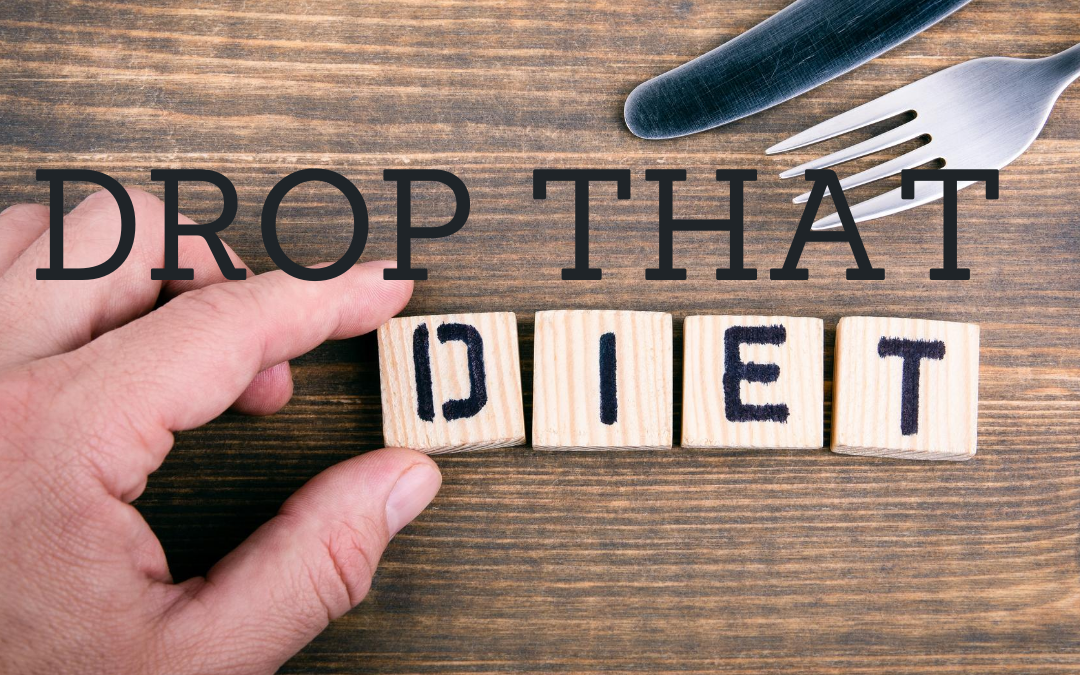
by Primelife Admin | Jul 29, 2020 | Featured, Food Science, News
What do the Keto Diet, Paleo Diet, Weight Watchers, Nutrisystem, Noom, Atkins, and even Intermittent Fasting have in common? They’re ALL some type of fad diet. It’s another one of those “tried it, had success, and then gained my weight back” diet plan that will always stick around no matter how hard we try to stay away from them. Fad diets date back to the Victorian era in the 1900s!! They’ve been a part of our culture for as long as we’ve all been alive and that’s one reason why they’ll always stick around. They are an entire culture built on money, marketing, the scale, and before and after photos. Thankfully, what we know now versus what we knew even 20 years ago is changing and leaning more towards an acceptance of the body, and overall health; not just being as skinny as possible and shaming ourselves when we fail to meet our own high expectations.
As defined by the medical dictionary, fad diets are defined as “ Any of a number of weight-reduction diets that either eliminate one or more of the essential food groups, or recommend consumption of one type of food in excess at the expense of other foods. Fad diets rarely follow sound nutritional principles for weight loss, which focus on ingesting fewer calories and/or consuming more energy through exercise; fad diets are generally not endorsed by the medical profession.”
I honestly couldn’t have said it better myself. Any diet that restricts or eliminates food groups, creates a feeling of deprivation, and only focuses on weight loss is created to give you short-term, fast results. Nothing in a fad diet will provide healthy principles that will give a long-term result that you can live with forever. So why do we keep chasing these diets and thinking that we “just haven’t found the right one for us yet?” Among the millions of reasons, a few of the most obvious include:
- Because they “work”
- People get results and they get them fast (30-90 days on average)
- Before and after testimonials showing an unrealistic improvement
- They give off the illusion of being “easy”
- Organized and planned for you
- BIG money makers
Let’s elaborate a bit on these points. By saying these diets work, I’m saying that you will get results and you will lose weight, but to what detriment? What happens when you stop this diet and go about your normal life again? Chances are, you’ll gain your weight right back. Diets aren’t structured to be followed for the rest of your life, they are created to give you drastic results that won’t last.
With the before and after testimonial pictures we constantly see, we think “well I want that, I want to feel and look that great”. The problem with these pictures is that you are NOT that person. Every body is completely different, and will respond differently to any diet.
They make transformations look easy because all you see is the before and after; not the struggles that person dealt with in between those photos.
Another reason we keep buying into them is they’re all planned out and organized for us. We don’t have to think about what to eat or how to exercise, it’s already made for us. But the problem with this is that no one body is the same! We absolutely cannot put ourselves into categories of diets and expect to have the same results of someone else that we know did it. Of course, they are HUGE money makers. Every one of these includes paying more money and giving you a sense of having “skin in the game” so you’re more dedicated to following a diet. Whether it’s buying their food, using their products, or going out and buying all new food for a meal plan, you’re going to be spending more money for something that’s not necessarily guaranteed.
I hope by now, you’re in a place where you’re ready to get rid of a diet and get on a long-term, life plan. How do we get off of the fad diet hamster wheel and into a consistent, real-life routine? We need to take time, dedication, be patient, and stay organized. Of course, meeting with a dietitian is the best way to find a healthy, balanced plan that will work for you and only you. Losing weight and feeling healthy isn’t always about the number on the scale or the number of workouts you do in a week. Feeling and looking your best is about appreciating your body and what it can do for you, as well as eating foods you genuinely enjoy and STOP restricting the foods you love.
When you stop setting rules and regulations for yourself, you’ll find a better balance between the “everything in moderation” motto we all hear so much about.
We also have to remember that feeling and looking healthy takes time; months, years or even decades. I often say to my clients that patience is the hardest part of weight loss. We are a society of instant gratification, but when it comes to your body, this is absolutely not the case. The harder you are on yourself for what you’re not doing, the more negative self talk you’re allowing. We need to be positive, focus on the wins we have, and throw the scale away. Who cares how much you weigh when you’re feeling your absolute best and have the most energy you’ve had in years? Everyone’s healthy body looks completely different; we need to stop comparing ourselves.
Fad diets are a part of our diet culture, and they will unfortunately never go away. So long as we keep buying into them, they will always stick around. So next time you think about starting a diet, think about your long-term goals. Working with a licensed professional will help you get around the physical and mental blocks to finding your healthiest self. Do yourself a favor and help us help you! Give us a call today!

